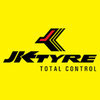Filter interviews by
Lucas-TVS Interview Questions and Answers
32 Interview questions
Implementing quality control measures and employee training can significantly reduce in-house scrap rates.
Conduct regular training sessions for employees on best practices to minimize errors.
Implement a robust quality control system to catch defects early in the production process.
Utilize lean manufacturing techniques to identify and eliminate waste.
Analyze scrap data to identify common causes and address them sys...
Market downturns can result from economic shifts, political instability, or changes in consumer behavior, impacting sales and investments.
Economic Recession: A decline in economic activity can lead to reduced consumer spending, as seen during the 2008 financial crisis.
Political Instability: Uncertainty from elections or geopolitical tensions can cause market volatility, like the impact of Brexit.
Changes in Consume...
To grow sales, focus on understanding customer needs, enhancing product offerings, and leveraging effective marketing strategies.
Understand your target audience: Conduct surveys to gather insights on customer preferences.
Enhance product offerings: Introduce new features or variations based on customer feedback, like a new flavor in a food product.
Leverage digital marketing: Use social media campaigns to reach a wi...
Building genuine customer relationships is key to sustainable growth in sales. Focus on trust, value, and engagement.
Understand customer needs: Conduct surveys to gather feedback and tailor your offerings accordingly.
Build trust: Share customer testimonials and case studies to showcase your product's effectiveness.
Engage regularly: Use newsletters or social media to keep customers informed and involved with your b...
I acquire product knowledge about plastic materials through research, collaboration, and hands-on experience.
Conduct thorough literature reviews on plastic materials, including properties and applications.
Engage with suppliers and manufacturers to understand the latest advancements in plastic technology.
Participate in industry conferences and workshops to network and learn from experts.
Utilize online resources, su...
A starter motor is an electric motor used to start an internal combustion engine.
Used to crank the engine to start it
Powered by the vehicle's battery
Engages with the flywheel or flexplate to turn the engine over
Commonly found in automobiles and other vehicles
RPN value FMEA stands for Risk Priority Number in Failure Mode and Effects Analysis.
RPN is a numerical value used to prioritize potential failure modes based on severity, occurrence, and detection.
It is calculated by multiplying the severity, occurrence, and detection ratings assigned to each failure mode.
The higher the RPN value, the higher the priority for addressing that particular failure mode.
RPN values help ...
There are five stages in APQP (Advanced Product Quality Planning)
There are five stages in APQP: Planning and Definition, Product Design and Development, Process Design and Development, Product and Process Validation, and Feedback, Assessment, and Corrective Action.
Each stage has specific activities and deliverables that must be completed before moving on to the next stage.
For example, in the Product Design and Dev...
Quality is the measure of excellence or superiority of something.
Quality is meeting or exceeding customer expectations
It involves consistency and reliability in products or services
Quality is achieved through continuous improvement and attention to detail
Examples: high-quality materials in manufacturing, accurate and timely services in customer support
5S and 3C are methodologies used for workplace organization and efficiency improvement.
5S focuses on organizing the workplace to improve efficiency and safety by sorting, setting in order, shining, standardizing, and sustaining.
3C stands for cleanliness, conformity, and control, emphasizing the importance of maintaining a clean and organized work environment.
Both methodologies aim to reduce waste, improve producti...
Lucas-TVS Interview Experiences
83 interviews found
I appeared for an interview in May 2025, where I was asked the following questions.
- Q1. Why are you interested in this company?
- Ans.
I'm drawn to this company for its innovative projects, commitment to sustainability, and opportunities for professional growth.
The company's focus on cutting-edge technology aligns with my passion for engineering and innovation.
I admire the company's commitment to sustainability, as seen in their recent green initiatives.
The opportunity for professional development through mentorship programs is something I value highl...
- Q2. What are your key skills?
- Ans.
I possess strong analytical skills, effective communication, and a solid foundation in engineering principles, making me a valuable team member.
Analytical Skills: I excel in problem-solving, demonstrated by my project on optimizing a mechanical system's efficiency.
Communication: I effectively convey complex ideas, as shown during my internship where I presented technical reports to non-technical stakeholders.
Technical ...
- Q3. Why are you choosing a quality role?
- Ans.
I choose a quality role to ensure products meet high standards, enhance customer satisfaction, and drive continuous improvement.
Quality assurance is crucial for maintaining product reliability; for example, in software, it prevents bugs that could lead to user dissatisfaction.
I am passionate about problem-solving; in my previous project, I identified a recurring defect and implemented a solution that reduced errors by ...
- Q4. Where are you from
- Ans.
I hail from a vibrant city known for its rich culture, technological advancements, and a strong sense of community.
I grew up in a city that blends tradition with modernity, offering a unique lifestyle.
The local tech scene is thriving, with numerous startups and innovation hubs.
Cultural festivals and events are a regular occurrence, showcasing our heritage.
The community is very supportive, often coming together for vari...
- Q5. How to decrease inhouse scrab rate
- Ans.
Implementing quality control measures and employee training can significantly reduce in-house scrap rates.
Conduct regular training sessions for employees on best practices to minimize errors.
Implement a robust quality control system to catch defects early in the production process.
Utilize lean manufacturing techniques to identify and eliminate waste.
Analyze scrap data to identify common causes and address them systemat...
I appeared for an interview in Jul 2024.
I am eager to advance my skills and learn more.
I will complete my work with great responsibility and high quality.
A programming challenge designed to evaluate a candidate's coding skills and problem-solving abilities.
(2 Questions)
- Q1. The train was delayed owing to a technical problem
- Q2. This computer magazine is too technical for me
Interview Preparation Tips
I appeared for an interview in Apr 2025, where I was asked the following questions.
- Q1. How to grow more sale
- Ans.
To grow sales, focus on understanding customer needs, enhancing product offerings, and leveraging effective marketing strategies.
Understand your target audience: Conduct surveys to gather insights on customer preferences.
Enhance product offerings: Introduce new features or variations based on customer feedback, like a new flavor in a food product.
Leverage digital marketing: Use social media campaigns to reach a wider a...
- Q2. What reason for market downfall
- Ans.
Market downturns can result from economic shifts, political instability, or changes in consumer behavior, impacting sales and investments.
Economic Recession: A decline in economic activity can lead to reduced consumer spending, as seen during the 2008 financial crisis.
Political Instability: Uncertainty from elections or geopolitical tensions can cause market volatility, like the impact of Brexit.
Changes in Consumer Beh...
- Q3. How to more grow in customer for genuine
- Ans.
Building genuine customer relationships is key to sustainable growth in sales. Focus on trust, value, and engagement.
Understand customer needs: Conduct surveys to gather feedback and tailor your offerings accordingly.
Build trust: Share customer testimonials and case studies to showcase your product's effectiveness.
Engage regularly: Use newsletters or social media to keep customers informed and involved with your brand.
...
I appeared for an interview in Apr 2025, where I was asked the following questions.
- Q1. How much Lucas tvs experience
- Ans.
I have extensive experience with Lucas TVS, focusing on quality control and team management in production environments.
Over 5 years of experience in production supervision at Lucas TVS.
Managed a team of 20+ employees, ensuring adherence to safety and quality standards.
Implemented process improvements that increased efficiency by 15%.
Conducted regular training sessions to enhance team skills and productivity.
- Q2. What education for me
Interview Preparation Tips
(1 Question)
- Q1. What project you handle in previous company
- Ans.
Implemented a quality improvement project to reduce defects in the production line.
Analyzed root causes of defects
Implemented process improvements
Trained staff on quality control measures
Interview Preparation Tips
I appeared for an interview in Feb 2025.
Fundamental questions regarding the degree you are pursuing.
Interview Preparation Tips
I applied via Approached by Company and was interviewed in Jul 2024. There was 1 interview round.
(1 Question)
- Q1. What is starter motor??
- Ans.
A starter motor is an electric motor used to start an internal combustion engine.
Used to crank the engine to start it
Powered by the vehicle's battery
Engages with the flywheel or flexplate to turn the engine over
Commonly found in automobiles and other vehicles
I applied via Approached by Company and was interviewed in May 2024. There were 2 interview rounds.
(3 Questions)
- Q1. Face to face interview
- Q2. About previous projects
- Q3. Detailed questions about specific project
(1 Question)
- Q1. Fixture concept desigh
I appeared for an interview in Mar 2025, where I was asked the following questions.
- Q1. Process related
- Q2. Product related
- Q1. What were the work culture and target details at your previous company?
- Q2. Family details they are asked
Top trending discussions






Lucas-TVS Interview FAQs
The duration of Lucas-TVS interview process can vary, but typically it takes about less than 2 weeks to complete.
Tell us how to improve this page.
Lucas-TVS Interviews By Designations
- Lucas-TVS Quality Engineer Interview Questions
- Lucas-TVS Engineer Interview Questions
- Lucas-TVS Production Interview Questions
- Lucas-TVS Sales Officer Interview Questions
- Lucas-TVS Trainee Interview Questions
- Lucas-TVS Electrical Maintenance Engineer Interview Questions
- Lucas-TVS Electrical Engineer Interview Questions
- Lucas-TVS Key Account Manager Interview Questions
- Show more
Interview Questions for Popular Designations
Overall Interview Experience Rating
based on 79 interview experiences
Difficulty level
Duration
Interview Questions from Similar Companies
Lucas-TVS Reviews and Ratings
based on 1.7k reviews
Rating in categories
|
Quality Engineer
196
salaries
| ₹2.3 L/yr - ₹7 L/yr |
|
Senior Engineer
169
salaries
| ₹5.5 L/yr - ₹10.5 L/yr |
|
Engineer
166
salaries
| ₹3.2 L/yr - ₹7.1 L/yr |
|
Production Engineer
160
salaries
| ₹1.6 L/yr - ₹6 L/yr |
|
Assistant Manager
114
salaries
| ₹7.8 L/yr - ₹13.5 L/yr |

Bosch

Ceat Tyres

UNO Minda

Apollo Tyres
- Home >
- Interviews >
- Lucas-TVS Interview Questions













